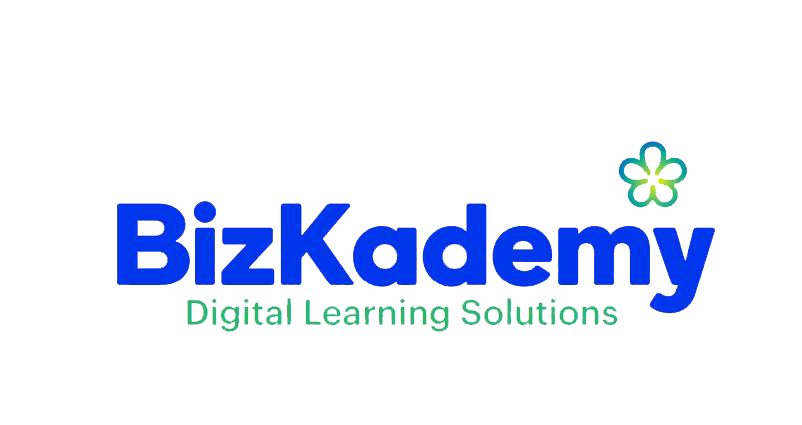E-learning programs have become an essential component of corporate training, professional development, and educational institutions in recent times. However, launching an e-learning initiative is just the beginning. To ensure its success, organizations must be able to measure the effectiveness of their e-learning programs. The key question is: how do you evaluate whether your online courses are delivering the intended results?
In this blog post, we will explore several methods and metrics to help you measure the effectiveness of your e-learning programs and ensure they are driving real impact.
1. Define Clear Learning Objectives
Before you can measure the effectiveness of any e-learning program, you need to establish clear and measurable learning objectives. What skills, knowledge, or competencies should learners gain by the end of the course? These objectives serve as a roadmap and form the basis of any evaluation.
- SMART Objectives: Make sure your objectives are Specific, Measurable, Achievable, Relevant, and Time-bound.
- Alignment with Business Goals: Ensure that the learning outcomes align with organizational goals, such as improving productivity, enhancing customer service, or fostering leadership development.
Clear objectives make it easier to determine whether the e-learning program is meeting its intended purpose and allows you to track progress over time.
2. Track Learner Engagement
One of the most straightforward ways to measure e-learning effectiveness is by monitoring learner engagement. An engaged learner is more likely to retain information, complete the course, and apply the skills learned in their job or studies.
- Completion Rates: Are learners completing the courses or dropping out halfway through? High dropout rates may indicate issues with course design, content, or delivery.
- Time Spent: Analyze how much time learners are spending on each module or section. If learners are rushing through without engaging, it may be a sign that the material isn’t resonating or relatable.
- Interaction Metrics: Track how learners interact with the content. Are they actively participating in discussions, completing assessments, and engaging with all the multimedia elements?
3. Measure Learner Satisfaction
Feedback from learners is invaluable in evaluating the success of an e-learning program. Learner satisfaction surveys, focus groups, and one-on-one interviews can provide qualitative data that reveal areas for improvement.
- Post-Course Surveys: Conduct surveys immediately after course completion to assess how satisfied learners are with the content, delivery, and platform usability.
- Net Promoter Score (NPS): Ask learners how likely they are to recommend the course to others. A high NPS indicates overall satisfaction, while a low score highlights areas needing attention.
- Qualitative Feedback: Encourage learners to provide open-ended feedback on what they found useful, what could be improved, and how well the course met their expectations.
Learners who are satisfied, are more likely to complete the course, retain the information, and apply what they’ve learned in real-life situations.

4. Assess Knowledge Retention and Skills Application
Ultimately, the goal of any e-learning program is for learners to retain knowledge and apply their newly acquired skills in their roles. Post-course assessments and on-the-job performance evaluations can help measure this.
- Pre- and Post-Assessments: Test learners’ knowledge before and after the course to measure how much they have learned. A significant improvement in post-assessment scores is a good indicator that the course is effective.
- Practical Application: Evaluate how learners apply the skills and knowledge gained from the course in their daily work or studies. This can be done through role-playing exercises, simulations, or real-life assignments.
- Behavioral Changes: Look for tangible improvements in job performance or productivity that can be attributed to the e-learning program.
Measuring knowledge retention and skills application gives you a direct view of how well learners are absorbing and implementing the course material.
5. Analyze Learning Analytics
Modern e-learning platforms provide detailed learning analytics that can give you insights into the effectiveness of your courses. Use this data to make informed decisions about course improvements.
- Performance Metrics: Analyze how learners are performing on quizzes, assignments, and assessments. Are there common areas where learners are struggling?
- Learning Pathways: Track individual learning paths to see how learners progress through the material. Are they following the recommended order, or are they skipping key sections?
- Drop-off Points: Identify any points in the course where learners tend to drop off or disengage. This data can help pinpoint where the course may need to be restructured or made more engaging.
Learning analytics can reveal hidden trends and areas for optimization that aren’t immediately visible through qualitative feedback or completion rates alone.

6. Evaluate Return on Investment (ROI)
For businesses and organizations, it’s essential to measure the return on investment (ROI) of e-learning programs. ROI analysis helps justify the cost and effort of creating and delivering e-learning content.
- Cost Savings: Calculate how much your organization has saved through e-learning compared to traditional classroom training, taking into account factors like travel, accommodation, and instructor fees.
- Increased Productivity: Measure how quickly employees who completed the e-learning course improve in terms of performance, productivity, or other key metrics.
- Impact on Business Goals: Evaluate how the e-learning program is contributing to larger business objectives, such as increasing sales, improving customer satisfaction, or reducing operational errors.
By comparing the costs of the program with the tangible benefits it provides, you can assess whether the e-learning initiative is delivering a positive ROI.
7. Use the Kirkpatrick Model for Evaluation
The Kirkpatrick Model is a widely recognized framework for evaluating the effectiveness of training programs, including e-learning. It consists of four levels of evaluation:
- Level 1: Reaction: How do learners feel about the training? This can be measured through surveys and feedback forms.
- Level 2: Learning: What knowledge or skills did the learners acquire? This can be assessed through tests, quizzes, and practical assessments.
- Level 3: Behavior: How has the training impacted learner behavior or performance in the workplace? This can be evaluated through performance reviews, on-the-job observations, and feedback from supervisors.
- Level 4: Results: What are the tangible business results of the training? This includes metrics like increased productivity, reduced errors, higher sales, or improved customer satisfaction.
By using the Kirkpatrick Model, organizations can get a comprehensive view of how effective their e-learning programs are at driving desired outcomes.
Conclusion: Continuous Improvement for E-Learning Success
Measuring the effectiveness of your e-learning programs is not a one-time event. It requires ongoing evaluation and optimization to ensure that your courses remain relevant, engaging, and impactful. By using a combination of learning analytics, learner feedback, performance assessments, and ROI analysis, you can ensure that your e-learning initiatives are delivering real value to both learners and the organization.
Remember, effective e-learning isn’t just about transferring knowledge—it’s about driving measurable results that help individuals and businesses thrive.





